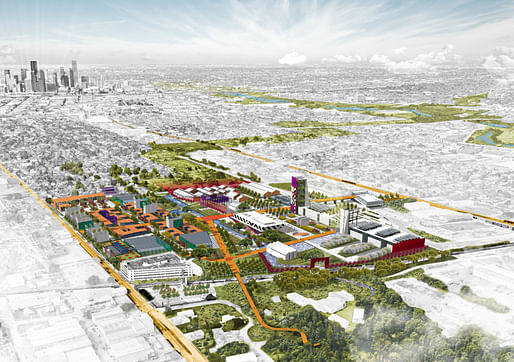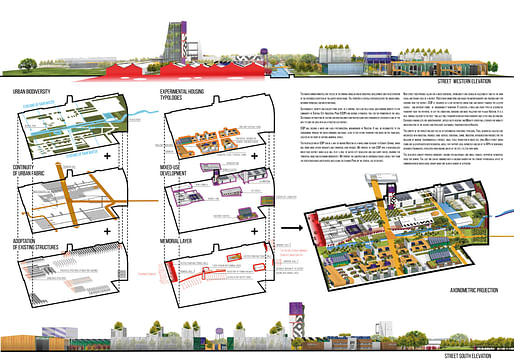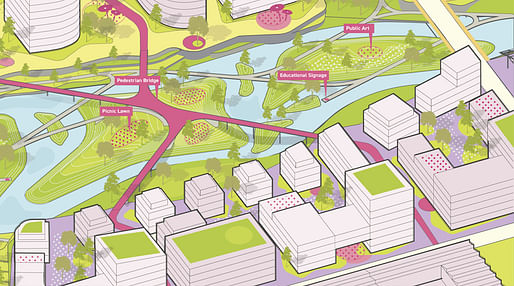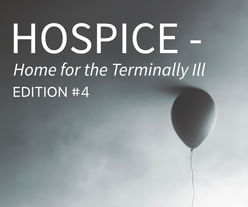

Buildner Architecture Competitions has just released the results of its recent design contest to reimagine an industrial park in Houston, Texas.
Entries were judged by a team that included Rice University’s Juan José Castellón, One Architecture & Urbanism Associate Dalia Munenzon, local developer Kirby Liu, and UltraBarrio Partners Amna Ansari and Marcus Martinez. A team of Belarusian designers took home the top honors, followed by two American-led projects and another six honorable mention winners hailing from Indonesia, the UK, U.S., and Chile, respectively.
The winners will have the chance to see their projects on public display as part of the TEDxHouston Countdown series. Scroll down to see the 'Greening the Industrial City' competition results.
1st Prize: Life Spiral by Pavel Nishchanka, Olga Dolinina, Yura Korolev, and Yuliya Nesviatayev (Belarus)

Jury commentary: "The jurors felt that this entry had the most sophisticated reading of the existing neighborhood context as well as a deep understanding of the neighborhood needs. The proposal was both a light touch and a radical reimagining of what is possible with adaptively reusing industrial structures. The jurors appreciated the inclusion of a “Memorial Wall” that connected to the adjacent historical cemetery for African Americans. The concept was also quite open ended, suggesting a degree of flexibility for the development process as opposed to a rigid masterplan. The project’s collage resonated with the radical visions of Archigram’s Instant City, as it suggested an almost guerilla do-it-yourself approach to urban cultural development. The jury also appreciated the gesture toward Buffalo Bayou and the site’s relationship to downtown, suggesting a sensitivity to urban context as well as positing a vision of the future that is multi-modally connective."
Read their full interview here.
2nd Prize: Boyou As: Community by Adam Scott, Olivia Pinner, Andrew Gresset, and Robin V Hueppe (United States)

Jury commentary: "The jury commends Bayou As Community for its thoughtful representation techniques which suggested a degree of optimism about the potentiality of the site and architecture’s role in the built environment. The entry also showed a diversity of building types correlated to different types and scales of program which exhibited the designer’s understanding of both community needs and typology. The entry had a thoughtful approach to the landscape design of the newly revealed Slaughterhouse Bayou, although the jury believed that more work could be done to understand how this landscape design could be interwoven throughout the project. Finally, while some of the radical landscape moves such as lifting the site to create a hill were appreciated, such moves should be done with an understanding of how this could potentially create a waterfall of storm runoff in Houston’s hurricane prone climate. In conclusion, this is a beautifully represented and innovative concept that shows the suggestive power of architectural drawing."
Read their full interview here.
3rd Prize: Water, Land, and People by Yoona Ahn & Peter Salim (United States)

Jury commentary: "This entry had a minimalist approach to the site which was felt to be a refreshing counterpoint to concepts that maximized every square foot of the site with buildings. Instead, what remains is a vision for a vibrant woods area with multifunctional architecture that serves the community at a variety of scales. The jury was most impressed with the project’s rendering of interior spaces and the sense of intimacy and diversity those views offered. However, with such a large amount of the site devoted to woodlands, the jury believes it is extremely important for that portion of the site to be designed. The project could improve by programming the woodlands more intensely and drawing this area in scale. Indeed, the pedestrian bridge rendered by the project seemed out of context given the fact that the site is in urban Houston. In addition, the jury believes the project could be improved by providing more variability in the architectural massing to suit each of the suggested programs. Nevertheless, the entry provoked thoughtful discussion about the future of development, the transition from urban fabric to landscape, and a designer’s sensitivity to the people the designs are supposed to serve."
Read their full interview here.
Honorable Mentions

MICROHOME Kingspan 2024/25
Register by Thu, Feb 13, 2025
Submit by Tue, Mar 18, 2025

Hospice - Home for Terminally Ill #4
Register by Wed, Jan 15, 2025
Submit by Mon, Jun 16, 2025

Museum of Emotions / Edition #6
Register by Thu, Jan 23, 2025
Submit by Tue, Apr 29, 2025

Kinderspace: Architecture for Children's Development #2
Register by Thu, Jan 16, 2025
Submit by Mon, Jun 16, 2025
No Comments